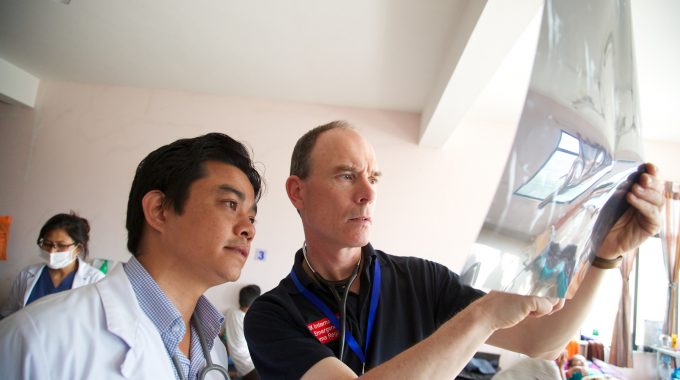We’re proud to announce that our brand new, state of the art medical facility in…

The role of technology in integrated care
Executive General Manager David Camilleri’s latest article in The Health Advocate, discusses the role of technology in improving integrated care.
Technology can be a key enabler of true integrated care, however it is not a magic bullet.
In healthcare, like most fields, technology has become a key component of achieving organisational outcomes, including with integrated care.
When quality operational activities and procedures underpin integrated care, everyone knows what they’re doing, what the processes are at organisational interfaces and is committed to and talking about improvement – sometimes under the guidance of a framework such as ISO certification.
That, in turn, can have a direct impact on patient outcomes.
It’s not hard to list the ways in which technology can help teams to integrate care, from sharing information to laying out protocols and alerts for exceptions, monitoring results, facilitating joint decision making, remote patient monitoring and of course telehealth.
For patients, technology can also help with patient engagement, providing information tailored to that patient, whether in terms of test results, education or self-monitoring.
If you’re making the move to integrated care, ideally operational processes, outcomes and requirements should be considered at the outset, with the technology as an enabler, rather than the processes being tailored to what “the system” can cope with.
In the real world, it may be that only some technological aspects of integrated care can be automated, while others remain independent and rely heavily on paper-based, phone or face-to-face communications processes.
Whatever the method, integrated care requires all people caring for a particular person to have access to the relevant information about that patient and his or her treatment, regardless of where the patient is being seen and who is seeing them.
Integration can extend to back-end processes between multidisciplinary teams, including IT systems, reporting systems, patient bookings systems and virtual file storage. If care is already integrated, technology can help improve operations in support areas such as transcriptions, appointment scheduling or practice management.
However, the high standards expected when it comes to the privacy and security of patient data mean that some standardised tools, and outsourced service providers, may not be appropriate unless they can demonstrate independent quality certifications.
Ideally, any move to an integrated care model would start with process improvement – to identify a streamlined operating model that serves the needs of all parties without having processes which are unnecessary or more complex than they need to be.
Large organisations inevitably build up layers and layers of complex and convoluted direction as to correct processes and standards, while processes may be less formalised in a community care or social service setting.
Unnecessary processes eat up time; are inconsistent with organisational goals; are duplicated elsewhere; reduce client/staff satisfaction; are counterproductive; and waste money.
Processes should be reviewed with an eye to why they exist, whether they serve the intended purpose and, if not, if they can be simplified or eliminated.
Process improvement starts with identifying and documenting the processes and procedures of all parties involved in the patient’s care in all settings, with one question at the forefront of your mind: “Why?”
The project team can (and should) put a toddler to shame when it comes to the frequency of “Why?”… Why is the process necessary? Why is this step needed? Why should it be done by that person rather than this one? Why do this in-house?
Substantial efficiencies can result from process improvement in areas such as transcriptions, where hospitals could save 20 per cent or more simply by outsourcing without compromising quality, reliability or speed.
In areas where efficiencies can be made, the benefits of those efficiencies should be shared across all of the care organisations involved – if the benefits won’t be shared, it’s hard to get buy-in.
Likewise, all organisations and people involved need to have a say in laying out their needs of any new technological investment to help overcome resistance to change.
This Post Has 0 Comments